CES 2025 Highlights: The Rise of Smart Terminals and the Evolution of Edge AI Chip Performance
![]() 01/17 2025
01/17 2025
![]() 484
484
In his keynote speech at CES 2025, NVIDIA CEO Jen-Hsun Huang outlined the trajectory of AI technology, evolving from Perception AI to Generative AI, Agentic AI, and ultimately to Physical AI, which encompasses sensing and execution capabilities.
Huang believes that Agentic AI will herald a significant transformation for enterprises, with AI agents collaborating seamlessly with humans. Meanwhile, Physical AI, the ultimate form of AI, promises to revolutionize manufacturing and logistics, turning vehicles, factories, and warehouses into robots, unleashing their potential through AI.
One of Huang's key strategies for realizing the visions of Agentic and Physical AI is decentralizing computing power to the edge. "While cloud computing is ideal for AI, its future should not be confined to the cloud but should be ubiquitous, especially in our personal computers." The prevalence of local/edge computing power is the inevitable direction of AI evolution.
Edge AI is thriving and has emerged as a major trend this year.
At CES 2024, innovative tech products combining AI chips, large AI models, and terminal hardware accelerated the implementation of edge AI. Entering 2025, edge AI undeniably stole the show at CES, showcasing the boundless possibilities enabled by decentralizing AI technology to the edge. From edge AI chips to devices to comprehensive application scenarios, many tech companies exhibited their latest advancements.
In the AI chip battle, chip giants launched new products, including edge AI chips. NVIDIA's GPU RTX 50 series enhanced AI computing power and introduced the personal AI supercomputer Project DIGITS and the next-generation automotive and robot processor Thor. Intel showcased the new Core Ultra 200HX and 200H series mobile processors, while AMD displayed the Ryzen 9000HX series processors. Qualcomm launched the Snapdragon X platform equipped with an NPU capable of 45 TOPS of computing power.
Domestic manufacturer Black Sesame Technologies introduced the Huashan A2000 chip with an industry-leading built-in NPU core, while Espressif Systems showcased the high-performance dual-core RISC-V ESP32-P4 SoC supporting AI applications.
Regarding terminal hardware, besides mobile phones and PCs, which began rapid AI integration last year, this year's show featured more wearable devices, home appliances, robots, automobiles, and other terminal products. After a year of exploration and AI integration, these applications are now taking off.
The release of new-generation AI chips marked the fastest progress. Terminal manufacturers such as Lenovo, HP, ASUS, and Acer unveiled multiple new AI PC products at CES 2025, each focusing on different AI functionalities. Some emphasized optimizing AI text processing, while others enhanced AI gaming performance. This year, more PCs with new AI features are expected to be launched successively.
Besides AI PCs, Quectel's innovative AI smart terminal, AI Buddy (AI Companion), which integrates intelligent voice interaction and translation, 4G/5G global roaming, personal hotspot, smart entertainment, charging, and battery life, also garnered attention. Positioned as a slim and lightweight smart device, it offers real-time translation, personalized AI voice assistance, AI image recognition, multi-model account services, roaming tariff services, and quick network registration.
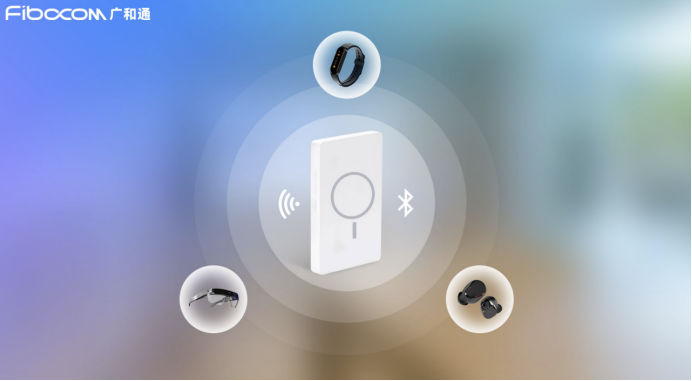
Source: Quectel Official
The importance of robots in the AI era is evident. Jen-Hsun Huang's keynote speech showcased numerous humanoid robots, illustrating the significance of this large intelligent terminal.
AI smart glasses were also a focus at CES, particularly domestic manufacturers' continuous innovations in this field. Companies like Liweike, ThunderBird Innovations, and Gyges Labs released or showcased new-generation smart glasses, while Mojie, Shanji Technology, Rokid, XREAL, and INMO Technology exhibited smart glasses cases. Accessing mainstream large models is now standard for smart glasses, and dedicated AI models for them are being refined from these models and deployed at the edge.
Judging from these cutting-edge consumer electronics advancements at the beginning of the year, edge AI has emerged as the major trend, and 2025 will be a year of groundbreaking implementations of edge AI products.
The AI Chip Competition Intensifies, with Edge Computing Power Leading the Intelligent Era
AI hardware continues to innovate in functionality, with AI chips supporting these features being the most noteworthy focus of CES 2025. This year's CES marked the first confrontation between AI chip giants.
NVIDIA unveiled multiple AI chip products: the GeForce RTX 50 series, the ultra-compact Blackwell GPU GB110 in the personal AI supercomputer Project DIGITS, the next-generation automotive and robot processor Thor, and the giant chip Grace Blackwell NVLink72.
Driven by NVIDIA, GPUs have transformed into versatile computing tools. The GeForce RTX 50 series reaffirms GPUs' potential in AI. The flagship RTX 5090 is the fastest consumer-grade GPU, featuring 92 billion transistors, 4000 TOPS of AI computing performance, Micron GDDR7 memory, 1.8TB/s memory bandwidth, and 125 Shader TFLOPS of programmable shaders capable of directly processing neural networks.
In the AI direction, the RTX 50 series adds tensor cores for mixed-precision computing, dynamically adjusting power based on reduced precision to enhance throughput while maintaining accuracy. NVIDIA's new products have once again broadened the boundaries of AI computing.
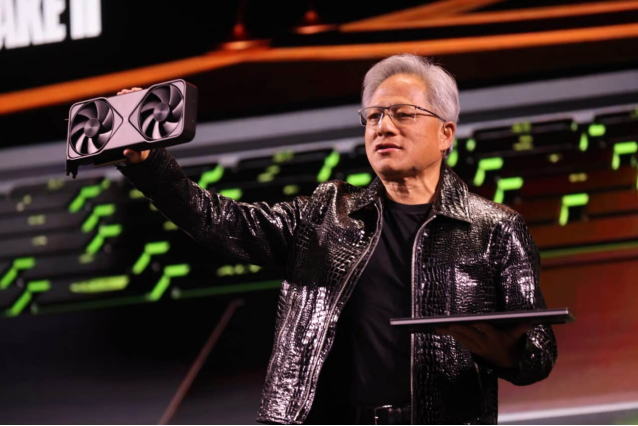
Source: NVIDIA Official
The next-generation automotive processor Thor offers 20 times the processing power of the previous-generation Orin, targeting automotive and robot applications.
The personal AI supercomputer Project DIGITS, capping off the keynote speech, showcases NVIDIA's ambition to bring enterprise-level AI computing power to personal devices. The personal AI PC is also an AI supercomputer. It is based on NVIDIA's GB110 chip and uses a CPU co-developed with MediaTek.
NVIDIA is vigorously promoting the extension of high-performance computing from the cloud and data centers to edge devices, with local computing power being the fundamental support for realizing AI visions.
At the exhibition, Intel highlighted three major development directions for 2025: smart automobiles, AI PCs, and edge computing, with chip innovations centered on breaking AI performance and energy efficiency limits. Intel's Core Ultra 200HX, 200H, and 200U series mobile processors introduce innovations in processing power, featuring enhanced performance cores (P-cores) and efficiency cores (E-cores), along with integrated NPUs specifically designed for AI acceleration.
The HX series processors have up to 24 cores (8 P-cores and 16 E-cores), while the H series has up to 16 cores (6 P-cores, 8 E-cores, and 2 low-power E-cores). Compared to the previous-generation HX series, the Ultra 200HX series offers up to 41% higher multi-threaded performance.
Michelle Johnston Holthaus, Intel's Interim Joint CEO and Product CEO, said, "Intel's AI PC product innovations, combined with the breadth and scale of our hardware and software ecosystems across all market segments, are enhancing users' experiences in productivity, creation, and communication. This opens up more than 400 new AI-related functions. Intel will continue to drive the development of its AI PC portfolio in 2025 and mass-produce products demonstrated to customers using Intel's 18A process technology in the second half of 2025."
IDC predicted that AI PCs in the consumer market would account for 23.2% of overall consumer PC shipments in 2024, rising to 62.9% in 2025. The many new edge AI chips and AI PCs showcased at the exhibition align well with this market trend.
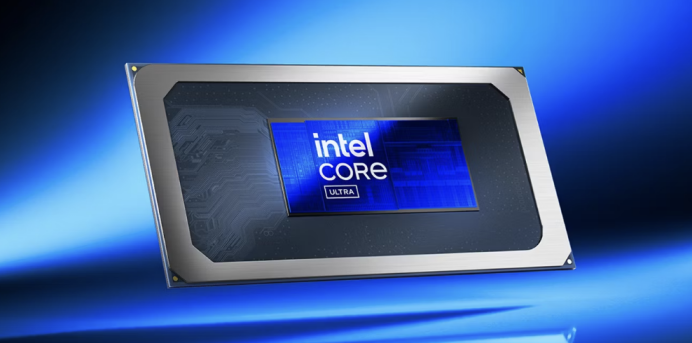
Source: Intel Official
In smart automobiles, Intel announced the upcoming launch of the second-generation Intel Arc B-series discrete graphics cards for vehicles, planned for mass production by the end of 2025, to support advanced in-vehicle AI workloads through high-performance computing power. In media interviews, Intel stated that there is high demand for GPU and AI computing power within vehicles and is working with partners to deploy large edge models and AI agents locally, requiring sufficient AI computing power.
Focusing on efficient computing and AI capabilities, AMD released multiple new products at CES, including the Ryzen 9000X3D, Ryzen 9000HX, and Ryzen AI 300 series. Among them, the Ryzen 9 9950X3D features 16 Zen 5 architecture cores, 16 cores, and 32 threads, with a maximum boost frequency of up to 5.7GHz. All chips in the Ryzen AI 300 series are equipped with dedicated NPUs containing 6 to 8 cores, supporting the next-generation Copilot+ PC expected this year. These new edge AI chips significantly drive innovation in PC hardware, addressing the computing power requirements for large AI model applications running on PCs, and this year will see even richer AI applications on edge products, particularly PCs.
"We are excited to showcase at CES 2025 how edge AI will become the next UI, transforming experiences in fields such as PCs, automobiles, smart homes, and more," said Cristiano Amon, President and CEO of Qualcomm, emphasizing the importance of edge AI. To address the AI demand at the edge, Qualcomm launched the Snapdragon X platform equipped with an NPU capable of 45 TOPS of computing power, enabling more efficient AI application operation. Additionally, Qualcomm showcased various terminals capable of independently handling complex AI tasks to enhance user interaction, including AI homes and robots.
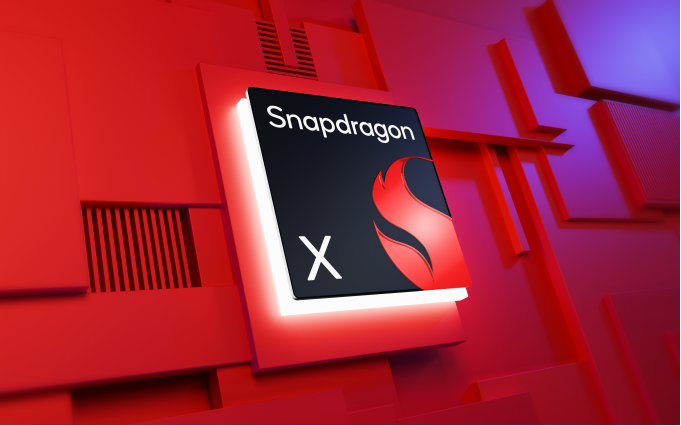
Source: Qualcomm Official
Black Sesame Technologies, a leading domestic automotive-grade autonomous driving computing chip manufacturer, brought the Huashan A2000 AI chip to CES, a higher-performance, more efficient AI chip tailored for the next generation of AI algorithms.
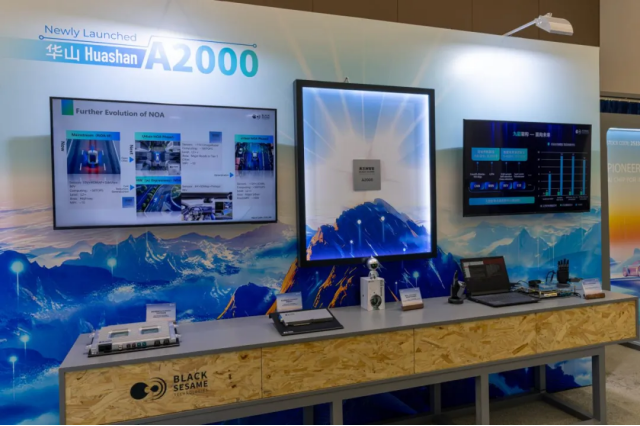
Source: Black Sesame Technologies Official
High computing power and robust performance best describe this AI chip. Built using 7nm technology, the Huashan A2000 is equipped with the industry's largest NPU core, Black Sesame Technologies' "Jiushao," which not only meets the computing power requirements for high-order intelligent driving scenarios but also supports various terminal computing power needs, including embodied intelligence and general-purpose computing.
Humanoid robots are highly suitable terminal applications in embodied intelligence, and the Huashan A2000 is already being applied in humanoid robots. Whether for the main processing requirements of the entire machine or the computing power needed for end execution, the Huashan A2000 provides robust computing power support.
The competition for AI chips is intensifying, with computing power remaining the core competitiveness. Manufacturers' latest products continue to push the boundaries of AI computing. After all, addressing the computing power bottleneck is crucial in the intelligent upgrading of terminals. Only by possessing computing power potential can it be converted into actual intelligent functionality.








